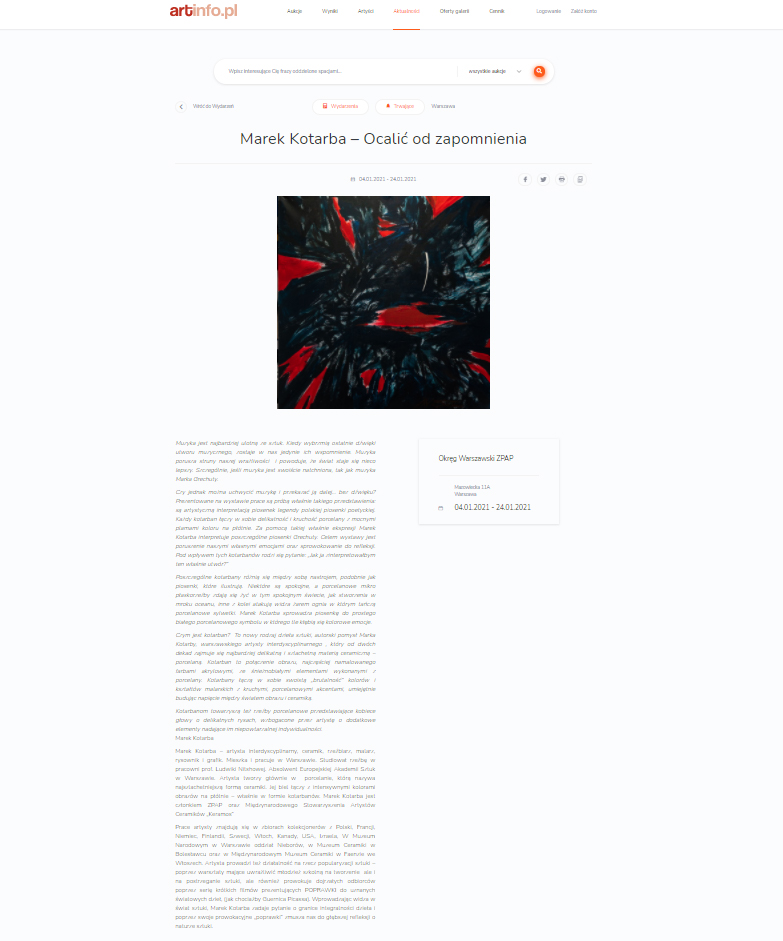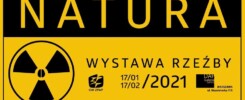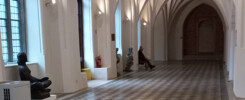On the subject of the exhibition at the W-Z Gallery of the ZPAP entitled. “To save from oblivion” wrote the portal ARTINFO.pl
https://artinfo.pl/wydarzenia/marek-kotarba-ocalic-od-zapomnienia

“Music is the most ephemeral of the arts. When the last notes of a musical piece ring out, only their memory remains in us. Music touches the strings of our sensitivity and makes the world a little better. Especially if the music is peculiarly inspired, like the music of Mark Grechuta.
But is it possible to capture music and pass it on… without sound? The works presented at the exhibition are an attempt at just such a representation: they are artistic interpretations of songs by the legend of Polish poetic song. Each kotarban combines the delicacy and fragility of porcelain with strong spots of color on canvas. It is through such expression that Marek Kotarba interprets Grechuta’s individual songs. The aim of the exhibition is to move our own emotions and provoke reflection. Under the influence of these kotarbans, the question arises, “How would I interpret this particular song?”
The various kotarbans vary in mood, as do the songs they illustrate. Some are tranquil, and the porcelain micro-reliefs seem to live in this peaceful world, like creatures in the darkness of the ocean, while others assault the viewer with the heat of the fire in which the porcelain silhouettes dance. Marek Kotarba reduces the song to a simple white porcelain symbol with colorful emotions swirling in the background.
What is a kotarban? It is a new kind of artwork, an original idea of Marek Kotarba, a Warsaw-based interdisciplinary artist , who for two decades has been working with the most delicate and noble ceramic material – porcelain. Kotarban is a combination of a painting, usually painted with acrylic paints, with snow-white elements made of porcelain. Kotarbans combine the peculiar “brutality” of painting colors and shapes with fragile porcelain accents, skillfully building tension between the world of painting and ceramics.
Kotarbanas are also accompanied by porcelain sculptures depicting female heads with delicate features, enriched by the artist with additional elements that give them a unique individuality.
Marek Kotarba
Marek Kotarba – interdisciplinary artist, ceramist, sculptor, painter, draughtsman and graphic designer. He lives and works in Warsaw. Studied sculpture in the studio of Prof. Ludwika Nitshowa. Graduate of the European Academy of Arts in Warsaw. The artist creates mainly in porcelain, which he calls the noblest form of ceramics. He combines its whiteness with the intense colors of paintings on canvas – precisely in the form of kotarba. Marek Kotarba is a member of ZPAP and the International Association of Ceramic Artists “Keramos”.
Marek Kotarba – interdisciplinary artist, ceramist, sculptor, painter, draughtsman and graphic designer. He lives and works in Warsaw. Studied sculpture in the studio of Prof. Ludwika Nitshowa. Graduate of the European Academy of Arts in Warsaw. The artist creates mainly in porcelain, which he calls the noblest form of ceramics. He combines its whiteness with the intense colors of paintings on canvas – precisely in the form of kotarba. Marek Kotarba is a member of ZPAP and the International Association of Ceramic Artists “Keramos”.
The artist’s works can be found in the collections of collectors from Poland, France, Germany, Finland, Sweden, Italy, Canada, USA, Israel, In the National Museum in Warsaw Nieborów branch, in the Museum of Ceramics in Boleslawiec and in the International Museum of Ceramics in Faenza, Italy. The artist is also active in the popularization of art – through workshops designed to sensitize schoolchildren to the creation but also to the perception of art, but also provokes mature audiences through a series of short films that present AMEN to world-renowned works, (such as Picasso’s Guernica). Introducing the viewer to the world of art, Marek Kotarba asks the question about the limits of the integrity of a work of art, and through his provocative “corrections” forces us to reflect more deeply on the nature of art.”
source – artinfo.pl


